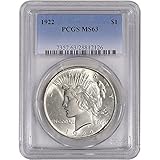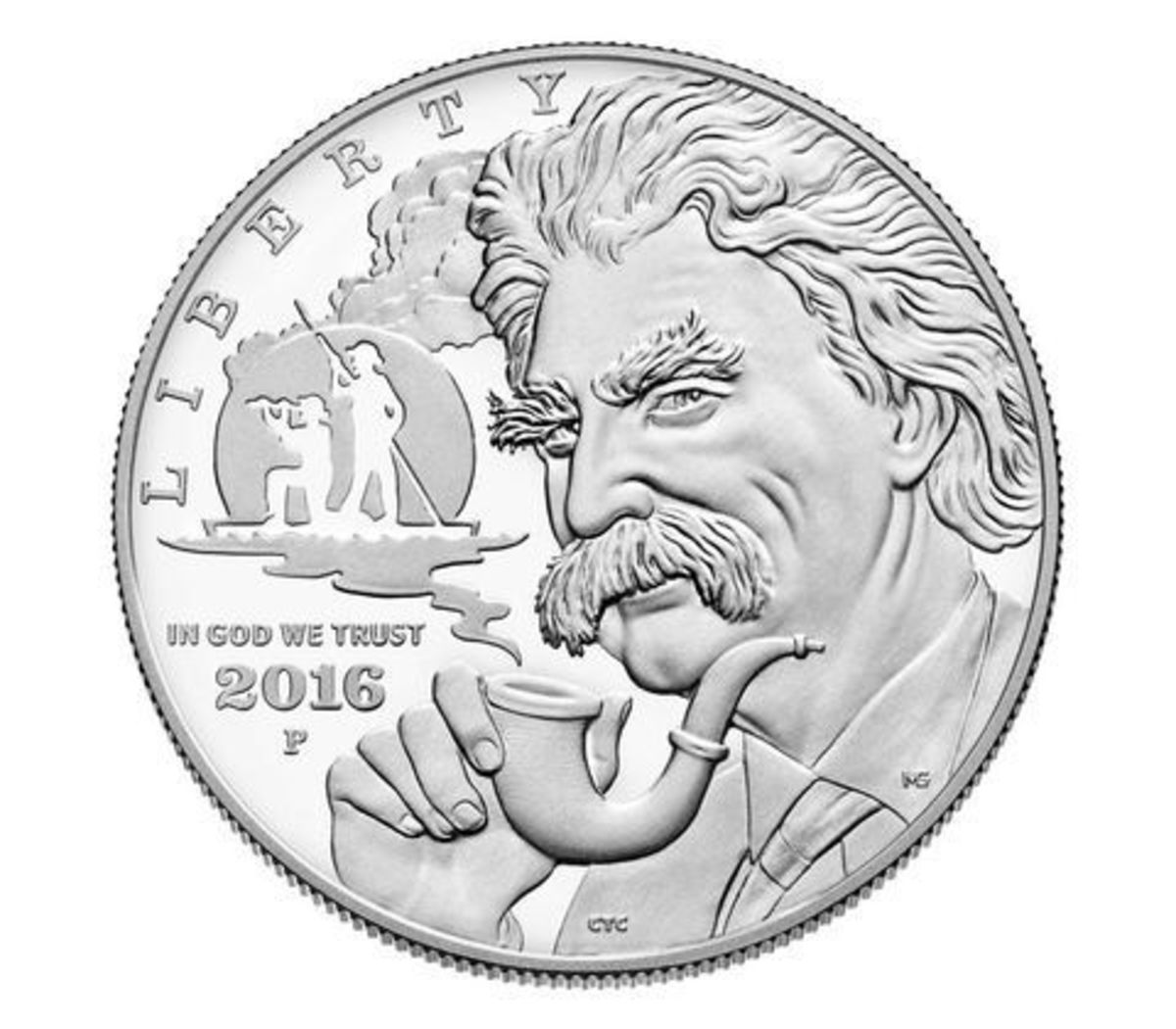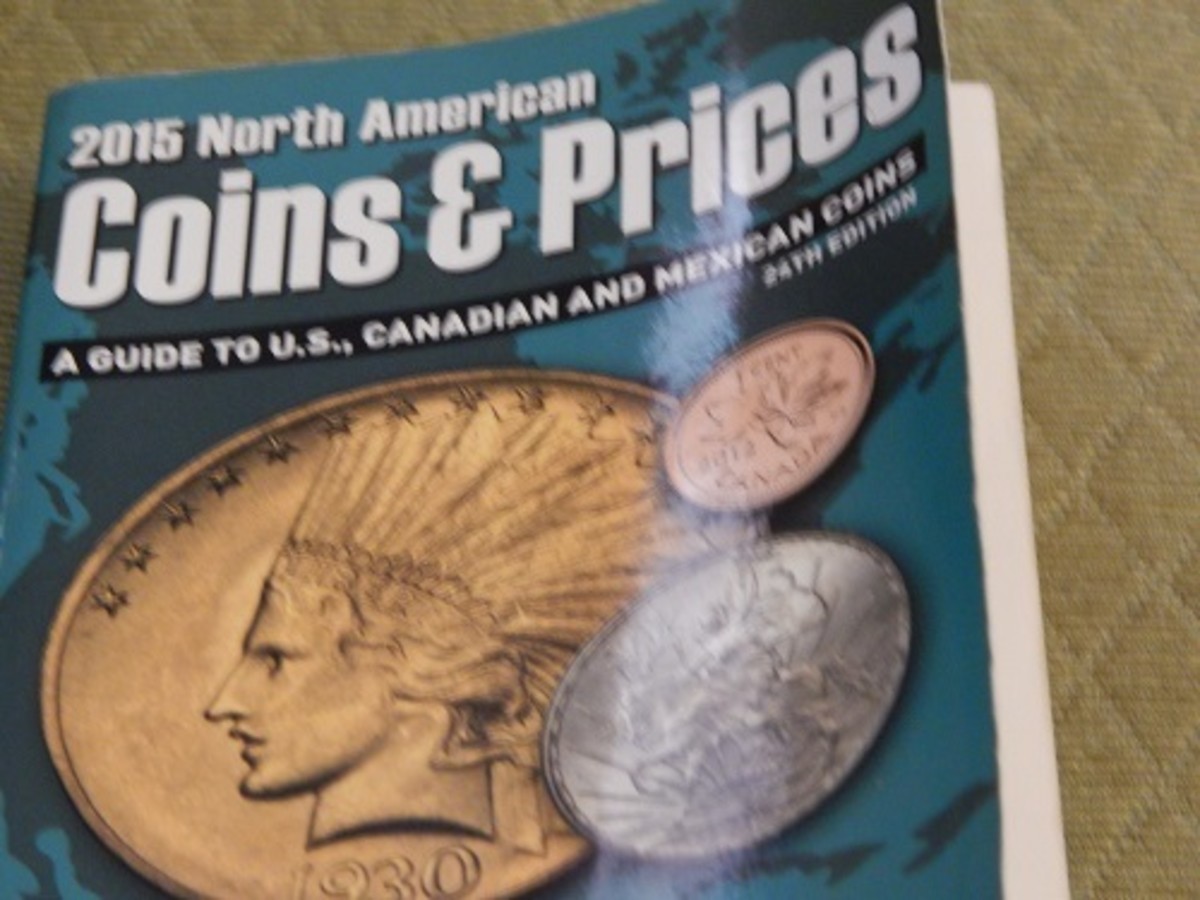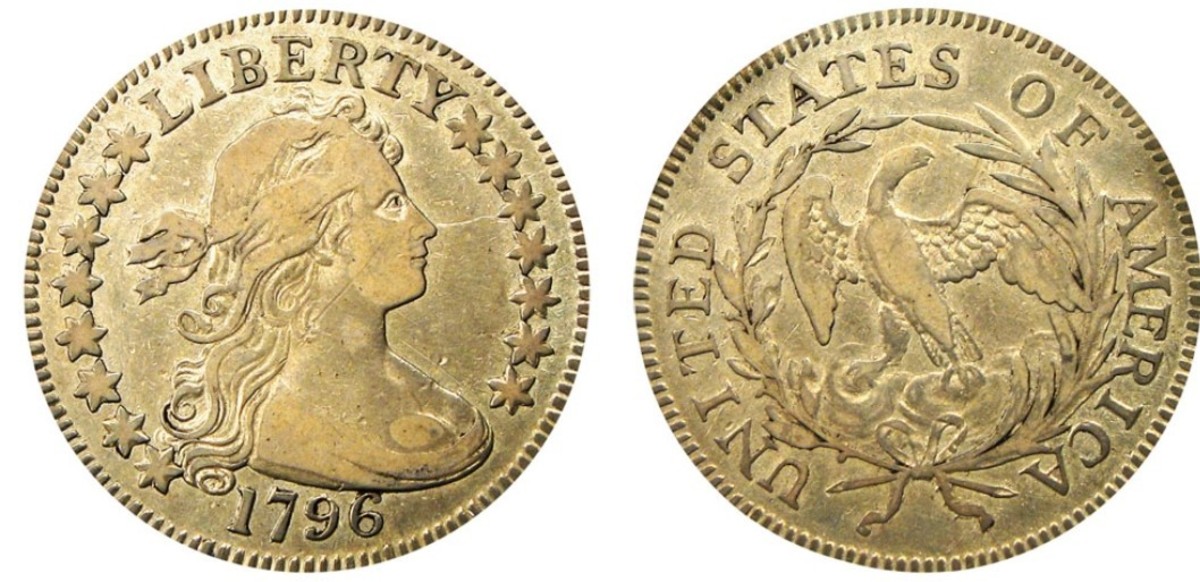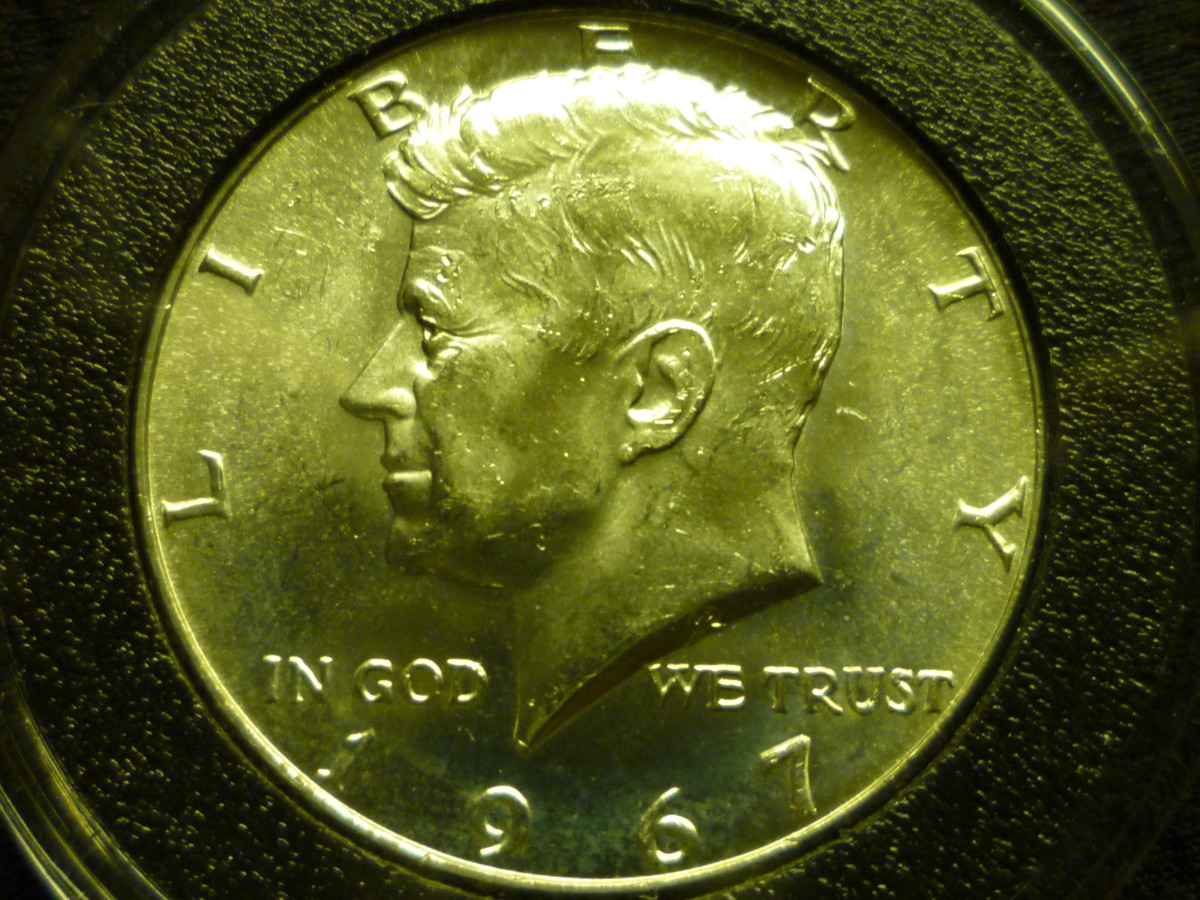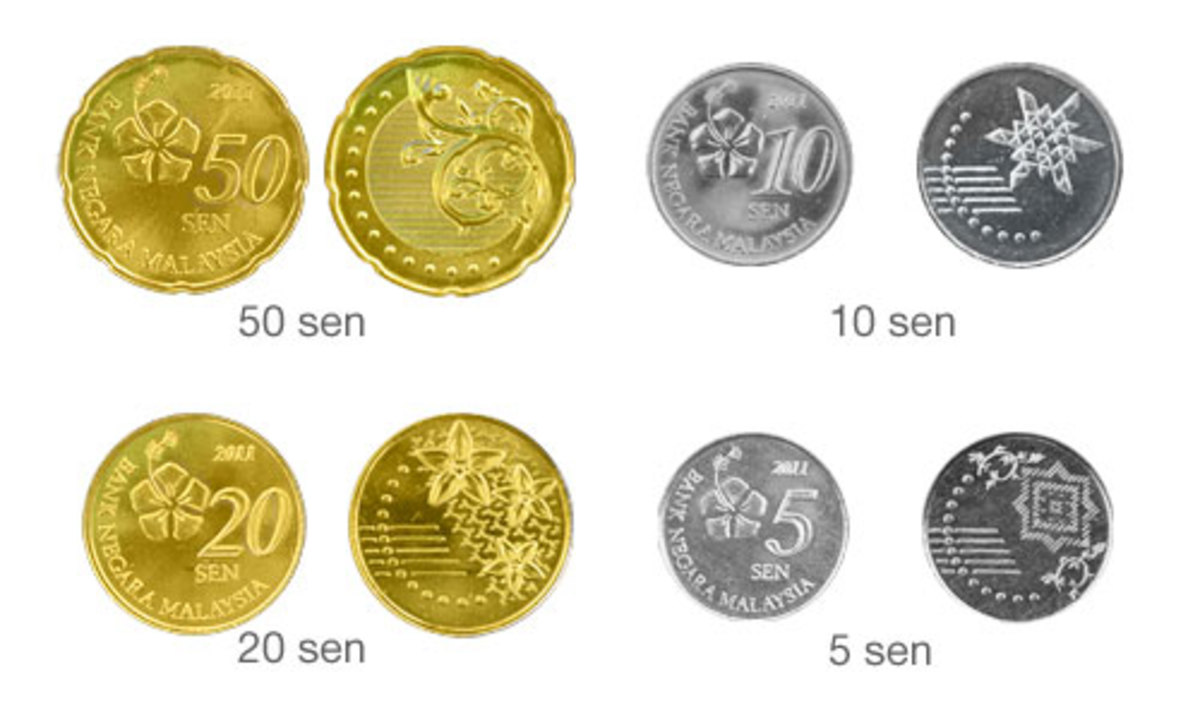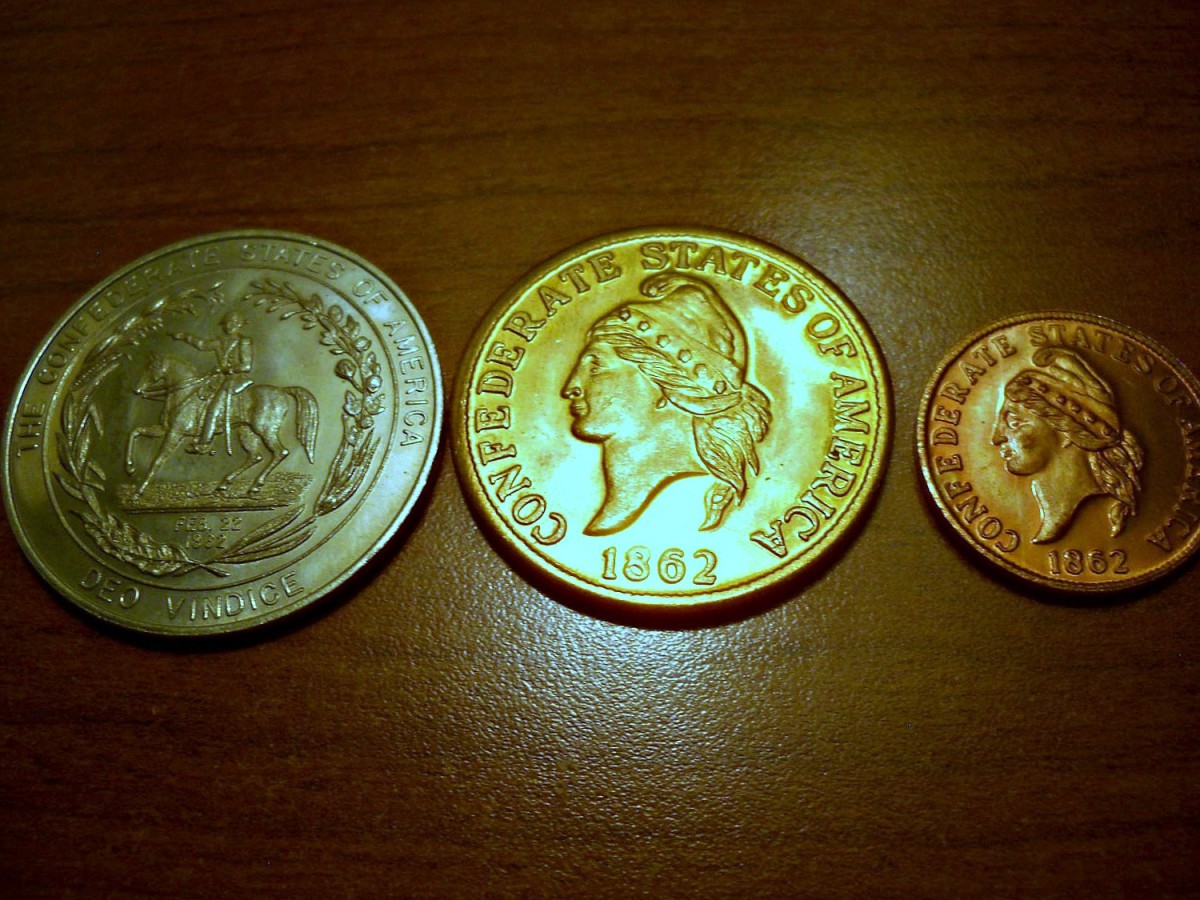The Peace silver dollar and the end of an era.
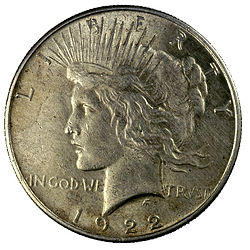
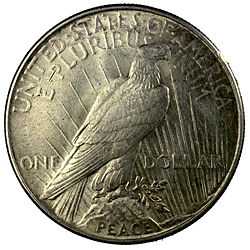
The Peace silver dollar, the last dollar made with silver bullion.
To understand the origins of the Peace dollar, we must learn a little history from the 1800s, and the early part of the 1900s. In the late 1850s through the 1880s and even later, huge quantities of silver were being mined in the United States, especially in western states, like Nevada. Then, in 1890, the Sherman act was passed by Congress. This required that the US government purchase $4.5 million worth of silver every month to turn into silver coins. Prior to this, “only” $2-$4 million worth of silver was being purchased every month by the United States government to turn into coins. Most of this silver bullion and was turned into Morgan dollars. In fact, 500 million of these silver dollars were made between 1878 in 1904. Then, to assist the British in the war effort, 47%, or 270 million of these Morgan dollars were melted down. They were made into silver bars and sent to England. The act that made this possible, the Pittman act, also required that a like number of silver dollars be produced to replenish the coins melted down. The first year of production, 1921, yielded 80 million silver dollars, the last year of the Morgan silver dollar.
As the first world war had just come to close, with so much tragedy just witnessed, the United States was ready for peace. There was talk in Congress, among coin enthusiasts, and the general public, for the creation of a coin design to commemorate peace. In Congress, the situation came to a head when a bill was presented to the house that would mandate the creation of a silver dollar celebrating peace. There was general support; however, a unanimous vote was missed by one. This proved to be only a minor setback, as another avenue to proceed was present. Prior law stated, that an overhaul of the designs on coins could happen every 25 years. In 1907, this overhaul started, but had not yet reached the silver dollar. Therefore, it was only necessary to get approval from the mint to create a new design.
Mint officials, conscious of the popular support for a new Peace dollar, determined they would sponsor a contest for the creation of a new design. In accordance with the law, the new silver dollar would have an image of Liberty on the front, and a depiction of an eagle on the back. Additionally, the coin would have the denomination (ONE DOLLAR); and the words “UNITED STATES OF AMERICA”, "E. PLURIBUS UNUM", " IN GOD WE TRUST", and "LIBERTY" incorporated into the design. The contest was by invitation only, and prominent sculptors and engravers of the day were invited. The winning design was made by Anthony De Francisci, and this coin stands as his crowning achievement.
Peace dollars
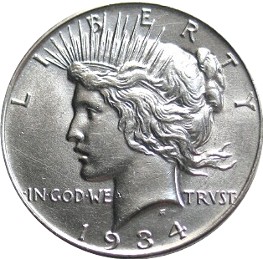
The Peace silver dollar design.
The sculptor used his wife, Teresa de Francisci, as a model, wearing a tiara. The effect is suggestive of the Statue of Liberty. Above her, following the arc of the coin, is the word LIBERTY. Mint officials, and the general public, found this design to their liking. There is a slight change from the artist's plan because he envisioned the date in Roman numerals; however, it is in Arabic numerals, as is the case with other United States currency.
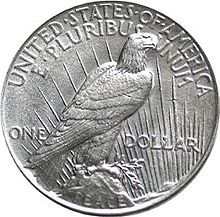
Popular opinion determines the back of the Peace dollar design.
The artist submitted two designs for the back, one with the Eagle at rest, holding an olive branch; the other, depicting an eagle and a broken sword. Mint officials favored a blending of the two. Using the former design as a base, the artist Incorporated a broken sword into the mountain that the eagle is perched on. Engravers set to work, a die was made ready, and announced to the public. There was a storm of outcry! A broken sword! That's a symbol of defeat, of impotence, of a nation that has capitulated. In a hasty reversal, and officials called in Anthony De Francisci and he oversaw the master engraver who removed the offending sword, and brought the olive branch into greater prominence. All this in less than a week. And immediately after that, millions upon millions of the coin were minted.
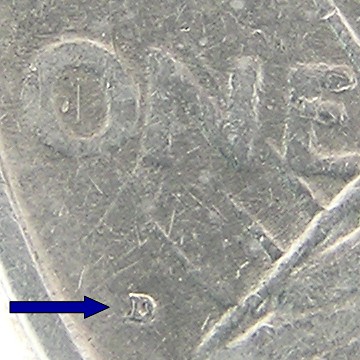
Rarer varieties of this silver dollar.
A problem with the die in the first year of production, has resulted in an extremely rare variety. The coin was initially created with a very high relief, similar to what you might find on a medal. This caused excessive wear on the dies. So the following year, engravers worked to make the relief less dramatic. Before doing this, they minted several tens of thousands of the coin. Mint officials had these melted down, but at least one 1922 variety with high relief entered general circulation.
The design of the coin itself created another sort of collectible. There are a large surfaces on the coin that tend to get nicked and scratched easily, more so than on other coins. So even coins intended for collectors, tended to get the slightest amount of wear. Additionally, the number of silver dollars minted at the San Francisco mint were substantially fewer in some years than those minted in Denver or Philadelphia. When these two factors combined, as in the case of an 1928 San Francisco silver dollar which is in absolutely perfect shape, the price tends to be about 2 to 4 times more expensive than similar coins. Right now (2011) that coin costs $25,000, and is very difficult to find.
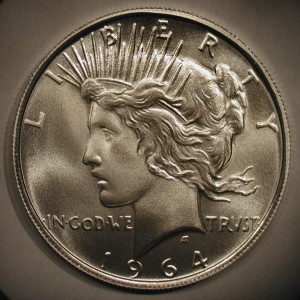
The Peace silver dollar in production.
The initial run of this coin was from 1921 until 1928. Once the quantity of coins specified by the Pittman act were made, the run came to an end. In 1934, the declining price of silver, caused the United States government to resume minting silver dollars. During 1934 and 1935, approximately 6 million more Peace silver dollars were made, after which production halted. They were released into general circulation, and are no more valuable than their counterparts.
With pure silver coinage being phased out, in 1964, the time was ripe to give this design a final hurrah. Legislation was passed, a loophole was observed, and 316,000 Peace silver dollars were minted in 1965 (bearing the date 1964). But it was not to be, as government officials reversed their decision, and ordered all these coins which had been minted, to be melted down. If any survived, they have not surfaced as of this writing.
More Silver Dollars
The Peace silver dollar, the last of its kind.
Like the silver dollars minted before it, the Peace silver dollar has significant silver content. It is 90% silver and weighs about an ounce. Like the Trade dollar, or the Morgan silver dollar, the Peace dollar was minted in quantity because of the fantastic amount of silver discovered in the United States of America. Subject to easy abrasion, the most valuable Peace dollars are the ones that survived unmarred. Only a few dozen proof Peace silver dollars were ever minted, and those only in 1921 in 1922. It is the only United States coin that shows the eagle with its wings closed, representing peace. In 1922, and 1965, large quantities of these coins were made, only to be melted down. In recent years, a high relief 1922 Peace silver dollar was discovered, and as these were all supposed to be melted, it is an exceptionally rare coin. Could it be, that somewhere there exists a Peace dollar minted in 1965? Stranger things have happened, and only time will tell. Overall, it is a beautiful coin, representing the optimism of its time.
Further Reading.
I've published articles about all the "true" silver dollars here on hubpages.
The Eisenhower Dollar and the Apollo 11 Space Mission
The Eisenhower dollar, minted from 1971 until 1978, was the last of the over-sized dollars minted in the United States. Unlike its predecessor, the Peace dollar, the Eisenhower dollars made for circulation have no silver in them, but are comprised of the same metals that make up the quarters and half dollars from the same era. There were, however, special coins struck at the San Francisco mint for collectors, made of 40% silver and 60% copper.
The Morgan Dollar more than 500 million made!
The Trade Dollar made in the U. S. of A. . . . for import to China!
The Seated Liberty Dollar, when the word "God" first appeared on a silver dollar.
The Gobrecht Silver Dollar, only 1900 ever made!!
The Draped Bust Silver Dollar, made for general circulation until 1804.
The Flowing Hair Silver Dollar, the first U.S. Dollar.
Some other hubber's thoughts about silver dollars.
An article about buying silver coins for profit.
Proof United States collector's edition silver dollars with dates in the 2000s and how to buy them.

